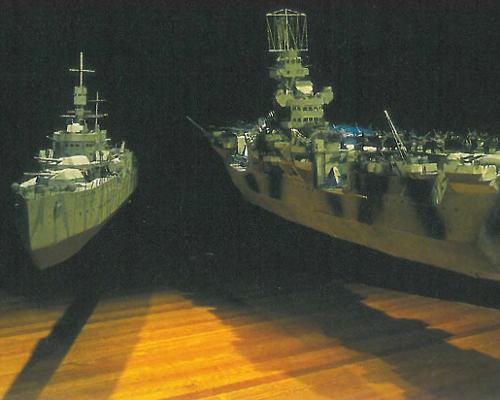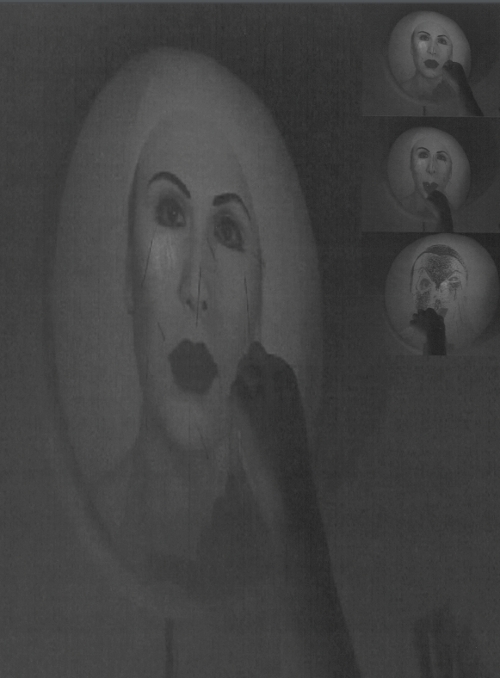.jpg)
We have grown up in a country immersed in European culture. We know their history, we learn their languages, we study their theorists and we are often shaped by their art. We identify with them more than with any other continent. Yet we are not European, and as each Aussie first lands on 'The Continent' for the first time, nothing is more apparent.
This issue has been grilled by some artists in S H Ervin Gallery's recent exhibition A Studio in Paris: Australian Artists at the Cite - a collection of works created at the six Australian-owned Parisian studios from 1967 to 2000.
National identity for us Aussies is a freshly stunned prawn. Do we peel off the layers to reveal the embedded, unavoidable vein? Or do we keep the shell and entrails intact and undisturbed, out of sight out of mind? Do we smother it in dill and lemon? Blue cheese dressing? Teriyaki? How we season our culture is pushed into the spotlight when we are out of our element, especially in Europe.
It's great to see how some artists in this exhibition tackled their own sensations of cultural discourse through their works. Nonetheless I was left scratching for more information.
The exhibition's display neglects at least half its artists. Works by Craig Bennett, Graham Blondel, Lyndall Brown and Charles Green and Mostyn Bramley-Moore, artists that engulf their work with ideas and sensations, were walked past almost unacknowledged due to minimal or no wall text. I longed to be reading accounts and impressions of the city - what struck them, what they hated, what they loved, what they have done and why they chose to make their art. Especially why no one chose to depict kangaroos with berets or snails on the barbie (!)
With more abstract pieces, artists such as Bramley-Moore's Eight Days in 1978 or Jayne Dyer's Le Petite Histoire do themselves no service through lack of wall text. While art gives no guarantee to play subject to its environment, artists can explain – or have explained – some portions of their works to ease audience confusion.
It is hard to determine whether to be critical of the curatorship or the art itself, but a majority of the works were so very far away from the context of the exhibition. There is little effort applied to gaining audience insight into each piece, which strips each artist of their argument and motive, even credibility.
The few artworks that were accompanied with some wall text were better understood and consequently more popular in the exhibition.
Greg Creek's achievement whilst practising at the Power Institute Studio in 1999 is his 18 metre-long Paris Desktop Drawing, a scroll of daily entries, sketches and scribbles of his observations whilst living in the city. The piece renders sentimental notions of both the travel journal and the sketchpad. We see his spills of excitement splash all over the page as he tells us more about Paris in every metre. Creek pays special attention to his cultural grounding. Despite our education, we are not of the European tradition, albeit we are post colonial. He eloquently nails it in a love heart, in which he has inscribed "Henri Paul for Dinki Di".
Captured at a poignant moment in artistic theory is a segment of Julie Rrap's 1986 work Secret Strategies/Ideal Spaces. The photo, originally part of an installation, has Rrap surrounded by depictions of Paris' phallic landmarks (need I elaborate?). Rrap has placed herself in the predicament of Manet's Olympia. Yet we cannot steal a peek at this one, "I reverse the Gaze of the original Olympia and turn my back on the viewer." This piece speaks so strongly of its time, It also speaks from the outsider – not only from a woman but also an Australian.
The ideas come flying at the viewer from Anne Wallace's Still Air, 1992. She has meticulously painted a nineteenth century French mantelpiece, with a mirror and a candlestick. Within the frame of the mirror we see the same image again, and within that mirror, the same again, etc. We feel as though the reflection should be of ourselves, yet as it only looks onto itself, perhaps we shall never really get a 'look in' to the European art world and instead be forever outside, watching an ornate, framed practice reflect an lament only upon itself.
Apart from its neglect to adequately explain some of Australia's most insightful contemporary artists A Studio in Paris nonetheless captures the excitement of Paris, the traveller and fascinating discrepancies of French and Australian culture.












